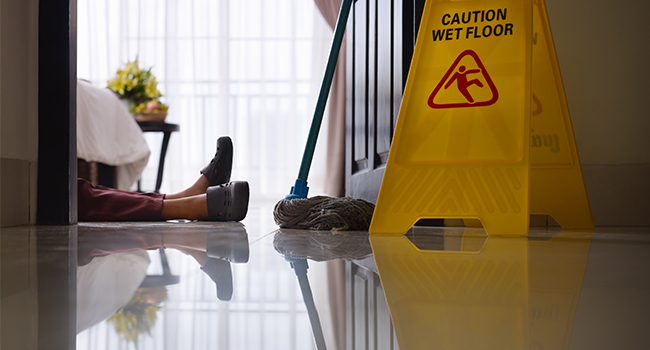
04 Nov Slip and Trip and Fall Cases: What You Need to Know
Tripping and slipping accidents occur regularly and are sometimes inevitable. If you are injured after a fall outside your home on another’s property, you may be entitled to compensation. It is important to know the details of the incident to understand who may be at fault and whether you may expect to be compensated.
This article will explain in brief the different types of fall cases, the circumstances giving rise to a lawsuit for your injuries, and how a personal injury attorney can assist with your case.
What is a Slip and Fall Case?
A slip and fall accident may occur when a person comes in contact with a slippery or wet surface that causes them to lose their balance and fall. Some of the most common slip and fall cases occur on wet or freshly waxed floors or a surface with excess condensation. Most public places will display signs warning patrons if a floor is wet or slippery. However, if the establishment fails to do so and an individual falls and is injured on the premises, the property owner may be liable.
Slip and fall injuries can be minor or severe, ranging from strains, sprains, and bruises to permanent injury involving broken bones, etc.. If you are injured in a slip and fall accident, it is important to seek medical attention immediately. You should also immediately photograph the area of the fall to include the substance that you believe caused the fall,
What is a Trip and Fall Case?
A trip and fall incident is different from a slip and fall because it occurs when someone trips over a physical object, causing them to fall. Common causes (not all) of trip and fall cases are uneven sidewalks, walkways, or objects obstructing the walking path. One of the most frequently occurring trip and fall incidents is when an individual trip over a step is not properly constructed or in disrepair that is not marked properly by the establishment.
Trip and fall accidents may cause different types of injuries compared to slip and fall cases. The victim may fall forward during a trip and fall incident, breaking bones, sustaining cuts, or abrasions of the skin. These are common injuries but certainly not all-inclusive.
What Proof is Necessary in a Slip or Trip and Fall Case?
Accidents happen every day, but what differentiates an ordinary mishap is negligence. Negligence is the failure on the part of the property owner to properly take care of his/her property which ultimately causes injury or damage.
The injured party must prove that their injury or damage occurred due to the negligence of the property owner. Also, the injured party is not responsible for their injury. This can make slip and fall and trip and fall cases difficult: one must prove that their injury was caused by someone else’s negligence and prove that they did not act in a way that makes them responsible for their bodily injuries.
Should I File a Personal Injury Lawsuit for a Slip or Trip and Fall Injury?
If you want to take your slip and fall or trip and fall case to court, there are a few things to keep in mind. First, the incident must have occurred on someone else’s property or business. Being injured on another person’s property opens the door to file a premises liability lawsuit, to establish that the property owner did not safely maintain the building or grounds.
The best way to determine whether it is feasible to file a personal injury lawsuit is to meet with an attorney. Experienced personal injury lawyers deal with issues of negligence and liability. They can help determine the best way to move forward after a slip and fall or trip and fall injury. They also know the defenses available to the property owner in defense of your claim.
Can I Receive a Settlement in a Slip or Trip and Fall Case?
If the property owner or insurance carrier assumes responsibility for your fall, you may receive a settlement after a slip and fall or trip and fall incident. You may settle before the case goes to court and often involves a payment by the responsible party or their insurance carrier. Payment may include but not be limited to, physical and emotional damages as well as medical bills/expenses associated with your injury. Accepting a settlement avoids a long court case that can take months or even years to resolve.
However, accepting the first offer made by the liable party may not be in your best interest either. A personal injury attorney can help you weigh your options and help you determine the best way to handle your unique case.
Final Thoughts
Slip and fall and trip and fall cases are complex and require the assistance of a legal professional. If you have been injured hiring a personal injury attorney with years of experience may help you achieve your desired outcome. The law offices of Carl P. Kasunic can assist you with your legal matters. Contact us today to schedule your free consultation.


